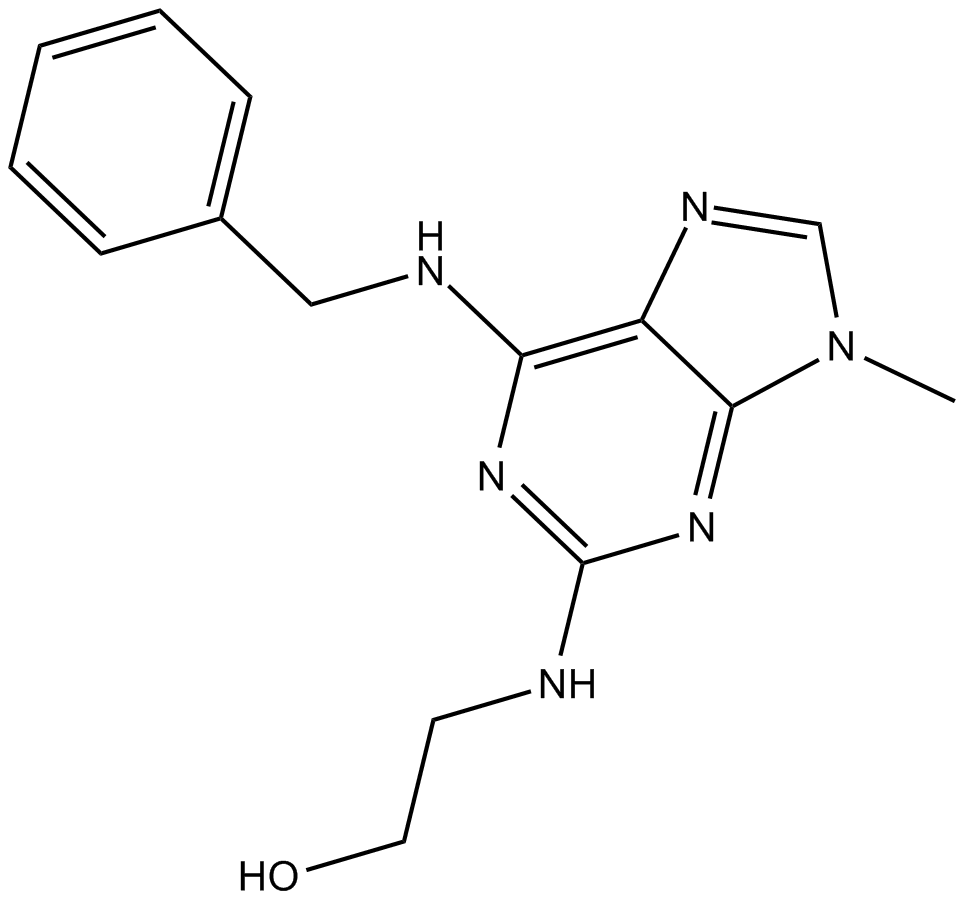Olomoucine |
| Catalog No.GC16520 |
cdk inhibitor
Products are for research use only. Not for human use. We do not sell to patients.

Cas No.: 101622-51-9
Sample solution is provided at 25 µL, 10mM.
Olomoucine is an ATP-competitive CDK inhibitor [1].
Cyclin-dependent kinases (CDKs) play important roles in the regulation of the cell division cycle and are therefore promising targets for cancer therapy [1].
Olomoucine is an ATP-competitive CDK inhibitor with IC50 values of 7, 7, 7, 3 and 25 μM against CDC2/cyclin B, Cdk2/cyclin A and Cdk2/cyclin E kinases, the brain CDK5/p35 kinase and the ERK1/p44 MAP kinase, respectively [1]. In metaphase-arrested Xenopus egg extracts, Olomoucine inhibited M-phase-promoting factor activity. Olomoucine provided an anti-mitotic reagent that might preferentially inhibit certain steps of the cell cycle [1]. In interleukin-2-stimulated T lymphocytes (CTLL-2 cells), Olomoucine inhibited DNA synthesis and caused Gl arrest [2].
In rats after after spinal cord injury (SCI), olomoucine attenuated astroglial proliferation and glial scar formation, decreased lesion cavity and mitigated functional deficits. In rats following SCI, olomoucine significantly decreased the spinal cord edema formation, suppressed microglial proliferation and attenuated production of proinflammatory cytokines in the traumatic spinal cord. Olomoucine also attenuated neuronal cell death [3].
References:
[1]. Vesel J, Havlicek L, Strnad M, et al. Inhibition of cyclin-dependent kinases by purine analogues. Eur J Biochem. 1994 Sep 1;224(2):771-86.
[2]. Abraham RT, Acquarone M, Andersen A, et al. Cellular effects of olomoucine, an inhibitor of cyclin-dependent kinases. Biol Cell. 1995;83(2-3):105-20.
[3]. Tian DS, Xie MJ, Yu ZY, et al. Cell cycle inhibition attenuates microglia induced inflammatory response and alleviates neuronal cell death after spinal cord injury in rats. Brain Res. 2007 Mar 2;1135(1):177-85.
Average Rating: 5 (Based on Reviews and 16 reference(s) in Google Scholar.)
GLPBIO products are for RESEARCH USE ONLY. Please make sure your review or question is research based.
Required fields are marked with *




















